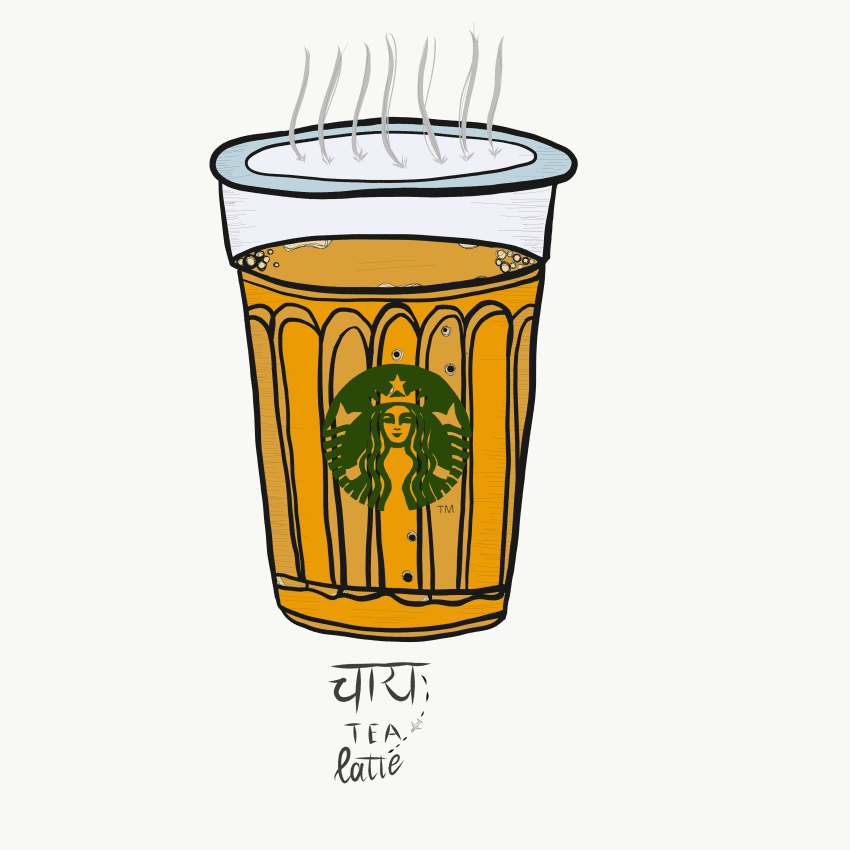
There comes a time in life when you realize you are no longer who you thought you were.
Maybe it is when you finally discard a t-shirt you bought in grade five and feel no longing for it anymore. Or perhaps it is the moment you decide to let go of someone you once could not imagine spending a second without. For me, it was finding pride, after living in Canada for almost eight years, in embracing both chai and chai tea latte.
No, this is not about tea.
You see, chai is a reference to my Indian roots while chai tea latte represents the seeds sown by Canadian culture in my identity. This tension between Eastern and Western culture is not exclusive to me. Rather, it is applicable to a large portion of immigrants.
This tension can tear apart a person’s identity. Suddenly, you are confused about which to pick — chai or the chai tea latte. This confusion only increases when your home culture is not in sync with the one you are exposed to at school or work.
For example, if you enjoy wearing bright coloured clothing for ten years and then move to a society where people only wore shades of black and grey, getting dressed is bound to become a difficult and somewhat confusing compromise. Yet this is a very minor example of adjustment — the true test of your cultural allegiance comes when picking between chai and chai tea latte turns into an everyday battle.
In this battle, you are not simply facing a difference in choice of attire or food preferences. Instead, you are up against parental and societal expectations. Parents expect you to behave and live as you would in your native culture, but society mocks you for not upholding its ideals and values. If one side is not prioritized over the other, these battles continue to rage, leading to the point where you forget who you truly are.
Sometimes, these battles cause a divide between you and those who matter most to you. I remember once fighting with my parents in grade five as they refused to let me go to my friend’s sleepover because it was not acceptable in Indian culture. I also remember disappointing said friend as her Canadian mindset hindered her ability to understand the harm of a mere sleepover.
These experiences, though unpleasant, were eye-opening — while I wanted to be comfortable and keep drinking chai, a small part of me was constantly tempted and tested by chai tea latte.
I, perhaps like many of us who have a hyphenated identity, have struggled with my identity several times. With time, however, I started to view my upbringing as a beautiful combination of two worlds.
The title Indian-Canadian, for me, is not that bad after all. Sure, this identity has come at the cost of some internal and external challenges, including struggles with defining my cultural identity, cultural bereavement, and being bullied at school for not being “Canadian” enough. Yet, it also introduced me to new things and ideas.
I can like gol gappe and lasagna. I can enjoy reading the works of Bengali poet and writer – Rabindranath Tagore and Canadian poet and novelist – Margaret Atwood. Most importantly, I can balance two cultures because I like both of the worlds I was exposed to.
As writer Azar Nafisi says, “You get a strange feeling when you’re about to leave a place … like you’ll not only miss the people you love but you’ll miss the person you are now at this time and this place, because you’ll never be this way ever again.”
Eight years after I moved to Canada, I am not the same person I was before. I have realized that I do not have to forget my roots or where I come from. I can enjoy sipping my chai and still be open to some chai tea latte.
This op-ed was written by a University of Saskatchewan undergraduate student and reflects the views and opinions of the writer. If you would like to write a reply, please email opinions@thesheaf.com. Ishita Mann is a first-year undergraduate student studying cellular, physiological, and pharmacological sciences. She is the founder and chief executive officer of Youth Helping Youth Saskatchewan — a non-profit designed to help students find meaningful opportunities and scholarships in Saskatchewan. This article reveals her journey to accepting herself for who she is and taking pride in a hyphenated identity.
—
Ishita Mann
Graphic: Ishita Mann